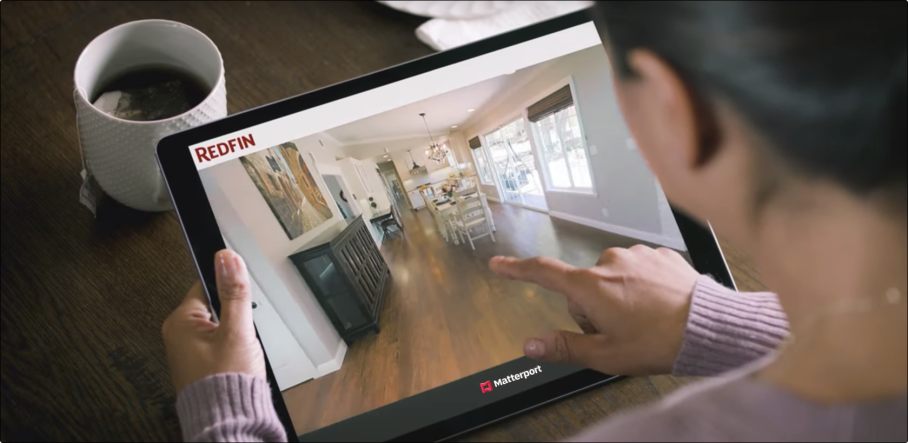How PropTech is helping to keep businesses going during the Coronavirus outbreak
During this unprecedented time, our customers are leveraging Matterport 3D digital twins to stay productive and committed to public health.
Whether we’re commuting locally or traveling to a distant city, we collaborate on a global scale, primarily face-to-face. The Coronavirus - or COVID 19 - has upended our connected world. Our common way of doing business has been fractured, and businesses are scrambling to find ways to protect its employees, continue to serve customers, and stay profitable.
As health officials recommend “social distancing” measures like canceling large events or staying home to limit contact with others, businesses across the globe are having to adapt the way they work to stay productive. Most are turning to obvious solutions like coupling mobile devices with collaboration technologies like Zoom, Slack and Google Docs so teams can continue to work together remotely.
But industries that require employees, customers or stakeholders to be on-site - like real estate, architecture, engineering, or construction (AEC) - need a technologically-advanced solution like Matterport. As COVID-19 continues to spread, our customers are telling us how their investment in our platform has helped them keep their businesses going.
Virtual collaboration in 3D spaces pushes projects forward
Global design and engineering firm Arup, the creative force behind some of the world’s most iconic structures like the Sydney Opera House, leverages the digital twins captured by Matterport to share immersive site walkthroughs with clients and contractors who can access them at any time, anywhere.
Arup regularly sends engineers and designers to job sites to assess and verify construction progress and discuss next steps with the client and contractors. Now using Matterport, Arup can also engage with stakeholders virtually with the same richness of experience as an in-person site visit. Teams can walk through, view, and accurately measure all areas of the digital twin - like ceiling heights, outlet locations, or size of elements - and use Mattertags to embed notes, links, videos, or photos to collaborate.
“We’re able to share a Matterport digital twin within 24-48 hours of scanning the space, which has helped us quickly share the status of a site and discuss what needs to be done,” said Farbod Mehr, Senior Technology Consultant at Arup. “We’ve saved time and money not only by minimizing site visits, but by helping us notice smaller issues early on, which could become larger issues later in the construction process.”
Due to COVID-19, Arup is enacting some company-wide travel restrictions. But the ability to collaborate through Matterport digital twins will become integral in managing project workflows, supporting productivity, and ensuring timelines stay on track.
“We still have a huge opportunity to make progress during this travel restriction,” said Mehr. “Instead of sending engineers and designers to the site, one local team member digitally captures the space in 3D and shares the digital twin with the entire team in order to keep the project moving forward.”
See how Arup transformed project design processes with the 3D digital twin
Digital twins enable agents to offer remote, 24/7 open houses
It’s a situation real estate professionals regularly face: a showing is cancelled because the homeowner becomes ill or is facing some other inconvenient circumstance. In the face of COVID-19, it’s quickly becoming a daily reality.
As the spring real estate selling season begins, agents must adjust traditional practices for open houses and property showings. The National Association of Realtors (NAR) has even set forth guidelines for realtors around this issue outlining best practices for the real estate industry, suggesting the use of virtual property tours or video tours.
Realtors for Keller Williams across the country already have a leg up. They capture Matterport digital twins of their listings, enabling them to share 3D tours of properties with prospective buyers located anywhere in the world. An accurate representation of the property serves as a 24/7 open house, making it accessible when an in-person showing isn’t possible - especially now with the COVID-19 outbreak.
Even if travel or social distancing restrictions hinder buyers from viewing a property in person, agents can simply send a link of a Matterport digital twin - whether it’s a residential or commercial space. Prospects can explore, evaluate, even measure anything within the space as if they were there.
Bill Lawton, MAPS Leadership Coach and Realtor at Keller Williams, says that it’s more common than ever to see prospective buyers writing offers even though they have never physically set foot on the property. Some buyers don’t see the property in-person until closing and doing the final walkthrough.
“A Matterport digital twin is an in-person showing. If it’s in the room you can see it – nothing is hidden. With the exception of actually putting footsteps on physical floors, you are walking through the house.”
Buyers are increasingly purchasing homes without ever stepping foot in them. In a recent survey we conducted, over half would purchase a property sight-unseen if there was a 3D tour available online.
Glenn Kelman, CEO of Redfin, believes 3D tours “can sell homes just as effectively without an open house.” The technology-powered real estate brokerage uses Matterport to capture digital twins of every home it lists so buyers can explore every nook and cranny of a home for sale at any time.
Just a few days ago on March 12, Kelman was asked what realtors could do to keep selling houses on CNBC. Referring to Matterport, he recommended “using a 3D camera to scan your home. You don’t have to have an open house. There are technologies that we have available - that other brokers have available - to create that experience online.”
He closed the interview by reassuring home buyers and urging the industry to adopt immersive technology: “If you don’t want to leave your house, you don’t have to. Industries should be prepared for this. This virtual reality has been coming for a long time and now we need it.”

COVID-19 Outbreak Sparks Many Innovative Uses of Digital Twins
In light of travel restrictions, quarantines, and social distancing, digital twins are proving invaluable in many other use cases across the globe.
Spring is the time when many high school seniors receive their college acceptance letters and tour campuses to determine which school they want to attend. East Carolina University is now offering a digital twin for prospective student-athletes and fans to tour the Clark-LeClair Stadium, the Walter and Marie Williams Indoor Hitting Facility, and the ECU Indoor Pitching Facility.
In Seoul, the National Museum of Korea adopted Matterport after being hit hard by the Coronavirus. Visitors can now tour the museum’s major exhibitions from any device in the safety of their homes.
Arup used Matterport digital twins during the recent opening of the new Civic Center in Long Beach, California to show staff the space before the first day of business. The staff was able to learn where all the features and amenities of the space were located – such as to enter the space, elevator locations, security desk placement, along with where the line should be formed for visitors to enter the building – all before walking in for the first time.
Providing rich, high-fidelity immersive information about a physical space, digital twins have boundless applications for virtual productivity when it is not feasible to be somewhere in person. How customers are using Matterport stretch only as far as the imagination and human ingenuity can reach.

